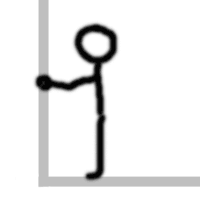
http://stroke.ahajournals.org/content/48/3/645?etoc=
This article requires a subscription to view the full text. If
you have a subscription you may use the login form below to view the
article. Access to this article can also be purchased.
Abstract
Background and Purpose—Advanced
imaging to identify tissue pathophysiology may provide more accurate
prognostication than the clinical measures used currently in stroke.
This study aimed to derive and validate a predictive model for
functional outcome based on acute clinical and advanced imaging
measures.
Methods—A
database of prospectively collected sub-4.5 hour patients with ischemic
stroke being assessed for thrombolysis from 5 centers who had computed
tomographic perfusion and computed tomographic angiography before a
treatment decision was assessed. Individual variable cut points were
derived from a classification and regression tree analysis. The optimal
cut points for each assessment variable were then used in a backward
logic regression to predict modified Rankin scale (mRS) score of 0 to 1
and 5 to 6. The variables remaining in the models were then assessed
using a receiver operating characteristic curve analysis.
Results—Overall,
1519 patients were included in the study, 635 in the derivation cohort
and 884 in the validation cohort. The model was highly accurate at
predicting mRS score of 0 to 1 in all patients considered for
thrombolysis therapy (area under the curve [AUC] 0.91), those who were
treated (AUC 0.88) and those with recanalization (AUC 0.89). Next, the
model was highly accurate at predicting mRS score of 5 to 6 in all
patients considered for thrombolysis therapy (AUC 0.91), those who were
treated (0.89) and those with recanalization (AUC 0.91). The odds ratio
of thrombolysed patients who met the model criteria achieving mRS score
of 0 to 1 was 17.89 (4.59–36.35, P<0.001) and for mRS score of 5 to 6 was 8.23 (2.57–26.97, P<0.001).
Conclusions—This study has derived and validated a highly accurate model at predicting patient outcome after ischemic stroke.
No comments:
Post a Comment